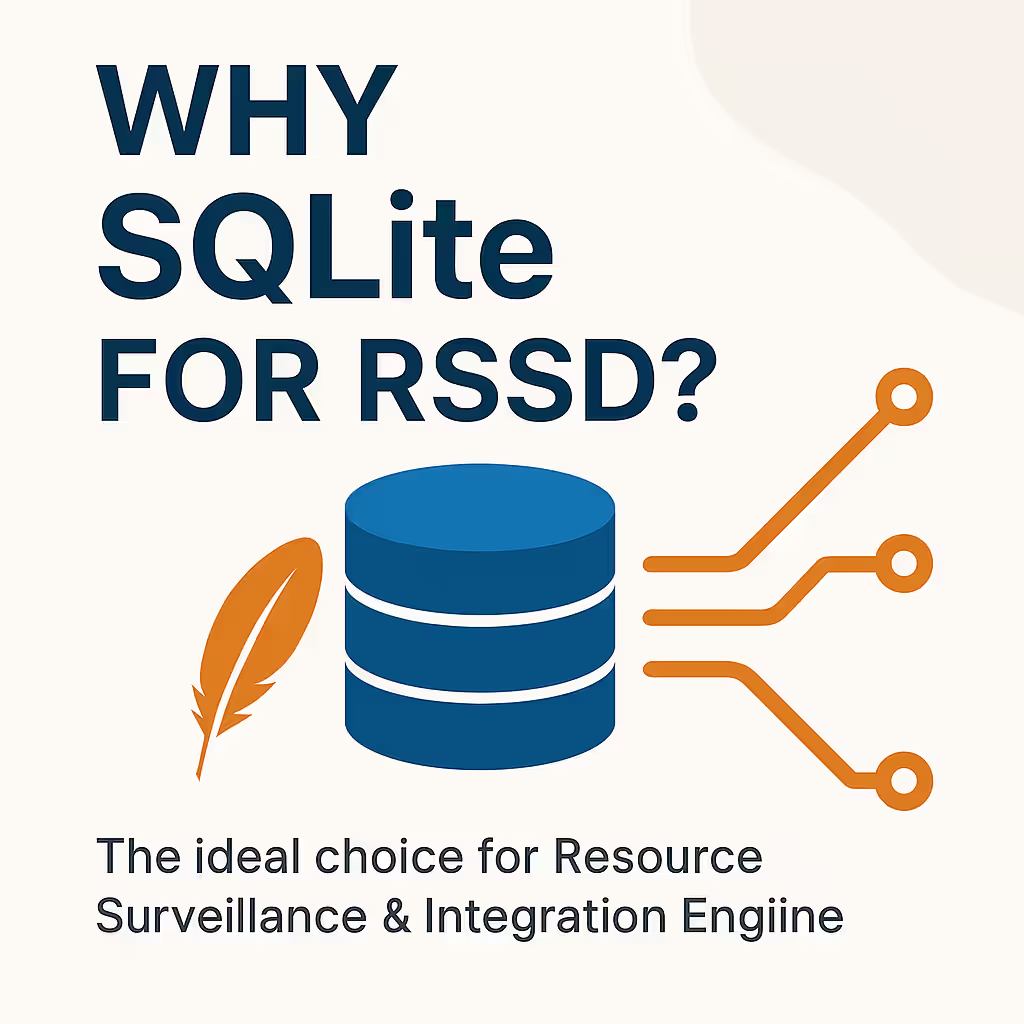At the heart of RSSD (Resource Surveillance & Integration Engine) is the need for a database that can efficiently handle vast and complex data while maintaining ease of use. For this, we chose SQLite, a powerful yet lightweight SQL engine. SQLite excels in small applications but can also scale up to large-scale use cases—making it the perfect choice for RSSD. Let’s explore why SQLite is ideal for this system.
1. The Simplicity of an Excel File
One of the key reasons we chose SQLite is its simplicity. Like Excel, which is widely known for its ease of use in handling structured data, SQLite can store, manipulate, and analyze data without the need for complex infrastructure. It operates as a self-contained file-based system, meaning no additional software or server setup is required.
SQLite databases are portable, acting as standalone files. This characteristic makes them ideal for scenarios where data portability is critical, such as environments that require frequent sharing or auditing of data. The ability to download a SQLite database and open it with standard tools mirrors the ease of working with Excel, but it delivers the powerful querying capabilities of SQL—hence the tagline, “Portability of Excel, Power of SQL.” More on this topic can be found in our detailed post.
2. As Portable as a ZIP File
SQLite databases are also as simple to transfer as a ZIP file. With no complicated server dependencies or configuration files, SQLite allows users to create, manipulate, and exchange a database just like any other file. This portability is especially valuable in environments like compliance or cybersecurity, where data may need to be shared across various organizations or devices, securely and quickly.
Moreover, the file-based architecture of SQLite removes the need for a separate process to manage the database. Transferring a 10GB SQLite file between teams can be as simple as copying a ZIP file onto a USB drive or securely sharing it through cloud storage—no setup required. In environments like regulatory science or healthcare, where sensitive data frequently moves between systems, this simplicity lowers both operational friction and risks.
3. Complexity on Par with Full SQL Databases
Despite its simplicity, SQLite is a full SQL database engine that can handle advanced transactions, joins, indexing, and more. This makes SQLite suitable even for complex data management tasks in environments that involve sophisticated querying, merging, and analysis of large datasets.
Unlike traditional relational database systems (e.g., PostgreSQL or MySQL), which often require dedicated infrastructure and extensive setup, SQLite’s design keeps it lightweight while still offering powerful features like atomic transactions, foreign keys, and robust indexing strategies. This balance makes it ideal for systems like RSSD that need both high performance and low overhead, capable of managing millions of records without breaking a sweat. As demonstrated by Wafris’ migration from Redis to SQLite, SQLite is more than capable of handling even high-traffic environments under heavy data load1.
In fact, SQLite has been used in a variety of large-scale applications, including popular web browsers and even aircraft flight software, showing that it’s not limited to small, lightweight applications but can scale efficiently in demanding, high-performance environments.
4. Merging Data from Multiple Sources
One of the core strengths of RSSD is its ability to merge and integrate data from various sources. Whether the data comes from emails, product lifecycle management tools like GitHub, or structured files such as JSON, Excel, or CSV, SQLite makes it easy to combine all of this content into a single, queryable database.
For example, SQLite’s flexible handling of data types and its SQL-centric design allow RSSD to combine data from multiple sources into a standardized format. This is particularly useful for industries like healthcare, where data comes from various standards like HL7, FHIR, or EHR systems.
SQLite’s design also allows it to support virtual tables, a feature that extends the database engine’s ability to handle non-relational data sources and integrate them into SQL queries seamlessly. This opens the door for handling data from virtually any source without complex ETL processes.
5. Scalability and Performance
Although SQLite is frequently associated with smaller-scale projects, its performance is highly competitive in larger systems as well. It can handle databases up to terabytes in size and manages transactions with high efficiency. One key aspect of SQLite’s scalability lies in its ability to operate without a network layer. For systems deployed in environments with limited or intermittent connectivity, this feature drastically reduces latency compared to traditional client-server models. As a result, SQLite avoids the bottlenecks of network IO, allowing faster data access and operations, which is crucial in high-demand environments such as cybersecurity, where real-time decision-making is vital1.
Furthermore, SQLite’s zero-administration model makes it ideal for large-scale use cases where database management resources are limited. By operating without a dedicated database administrator (DBA), SQLite removes the need for extensive maintenance, automatic recovery, or tuning, unlike traditional RDBMS setups. This translates into lower operational costs and reduced complexity for organizations that handle substantial amounts of data.
6. Security and Data Integrity
Another critical advantage of SQLite in RSSD is its focus on security. SQLite allows data to be encrypted at the file level, offering an additional layer of security for sensitive information. Furthermore, its transactional integrity ensures that even under crash conditions, data is preserved and remains consistent—essential for sectors like regulatory science or healthcare, where data integrity is paramount.
7. A Universal Data Tool for Evidence-Based Decision Making
In the end, SQLite offers RSSD a unique combination of simplicity, portability, and performance. By using SQLite, RSSD acts as a universal data aggregator, pulling evidence from various systems and ensuring that this data is queryable using SQL-friendly tools. For industries where evidence-based decision-making is critical—like cybersecurity, healthcare, and regulatory science—SQLite provides a unified platform for data storage, analysis, and compliance. Whether it’s merging large datasets or managing complex queries, SQLite’s flexibility ensures that the RSSD system remains both scalable and secure.
Bibliography
Footnotes
-
Michael Buckbee, “Rearchitecting: Redis to SQLite,” AuditBoard, published September 2023, 2024, https://wafris.org/blog/rearchitecting-for-sqlite ↩ ↩2
